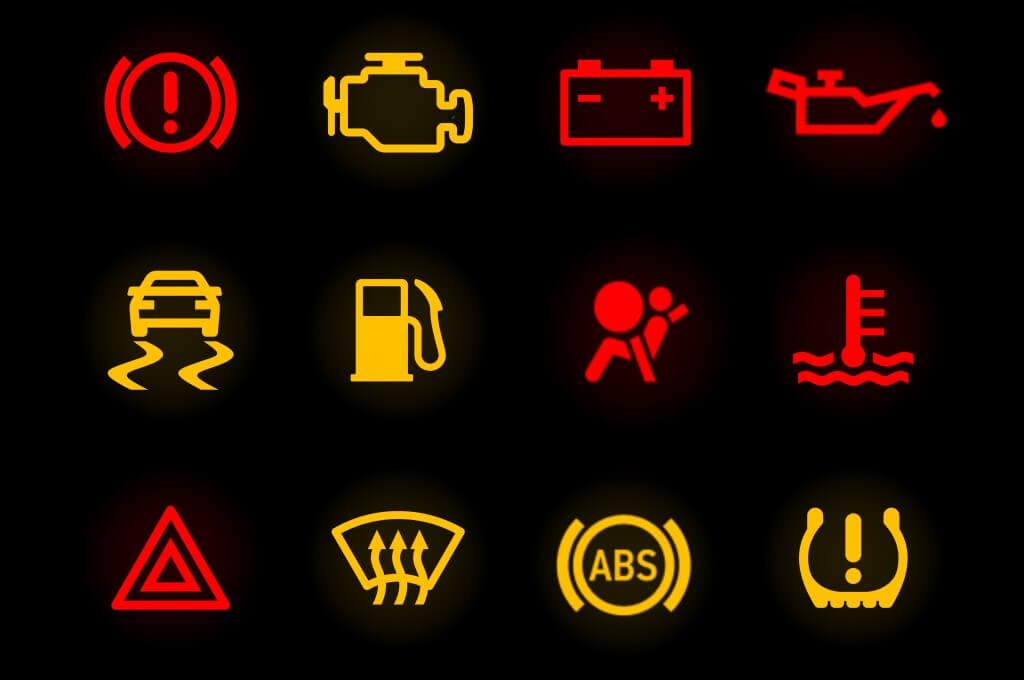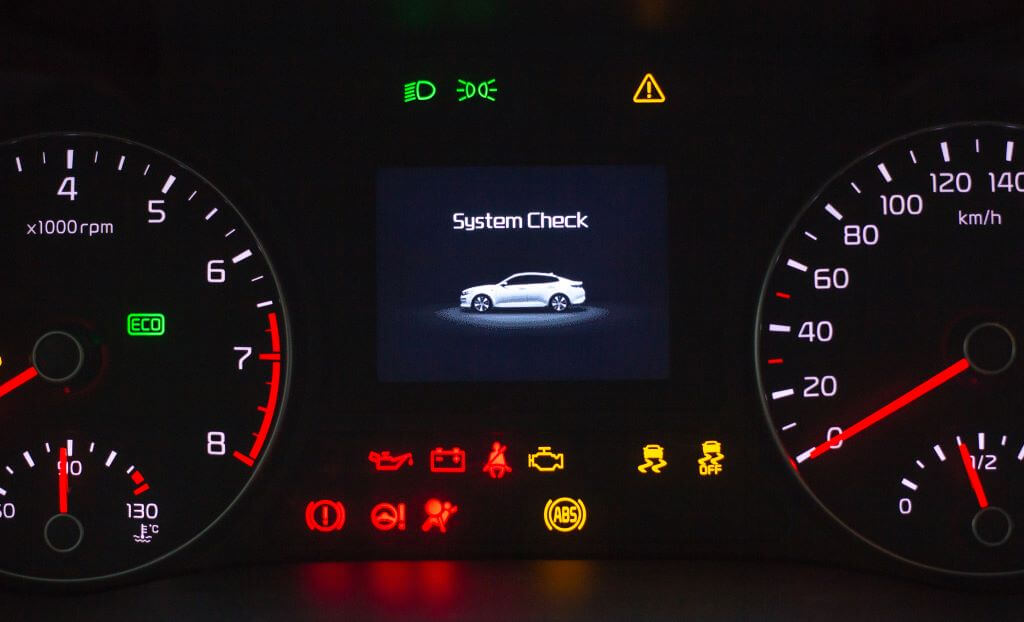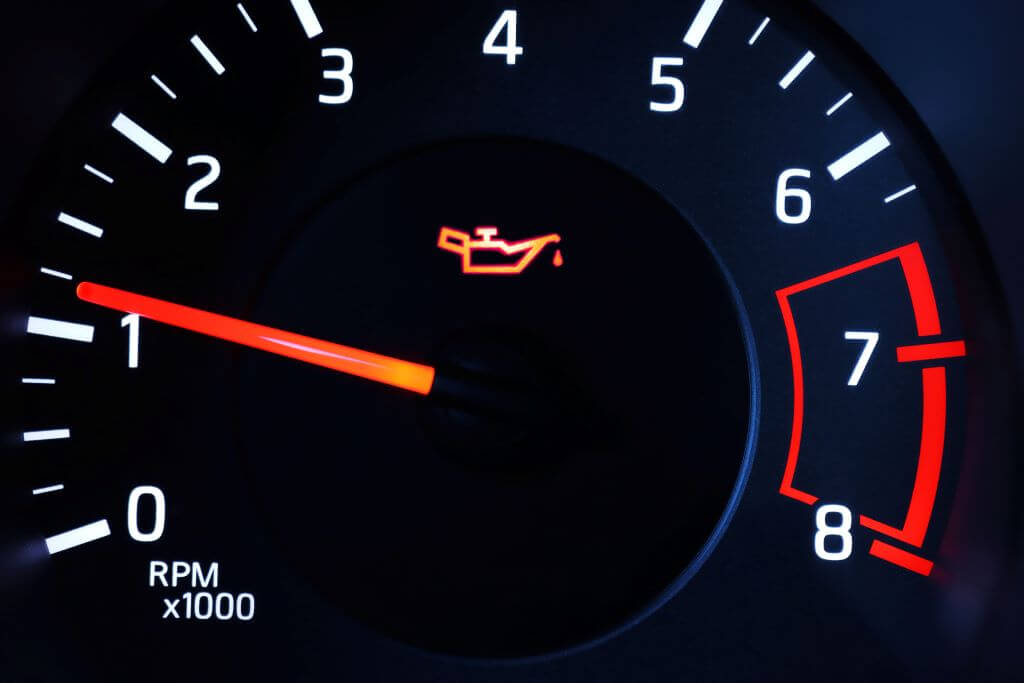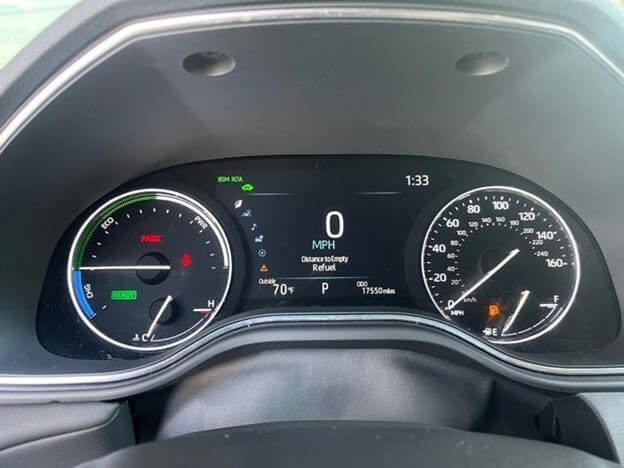Modern cars, with their cutting-edge engineering, are a joy to drive. The Toyota Camry is no exception. It offers a supremely smooth and reliable driving experience. But vehicles nowadays are also highly sophisticated—all functions and in-built systems are run and monitored by computers.
The dashboard is the interface that provides the driver with feedback from the computer. Dashboard lights both let you know all is well and draw your attention to any issues if they arise. Fortunately, the dashboard is simpler to navigate than the computer it communicates with. Toyota Camry warning lights can be interpreted easily by color.

Color Codes
Green or blue means a system is functioning normally, or currently in use.
Yellow/orange means something isn’t functioning normally. It’s probably nothing serious, but you should look into it without delay. An orange battery light, for example, could just mean there’s a loose cable connecting it that needs fixing or that you’ll soon need a new battery.
Yellow can also be a low-risk warning, indicating, for example, that your traction control system has engaged automatically, as in response to slippery roads.
Red means something is wrong and could be a safety issue or a problem that is potentially damaging to your car. You should pull over and stop the car as soon as you are able.

5 Toyota Camry Warning Lights That Mean It’s Time for a Check-Up
Some Toyota Camry warning lights are self-explanatory. The engine oil warning light simply means it will soon be time to change your oil, and the tire pressure warning light could mean you have a slow leak or, more likely, just need more air in your tires. Other lights, on the other hand, such as the high engine coolant temperature light, indicate you need to take rapid action. If your engine is overheating, for instance, you’ll need to address the issue as soon as possible.
There are also a number of lights that just mean it may be time to take your car in for servicing. In fact, your car actually counts the miles since your last service. The service reminder light—a yellow spanner with an exclamation mark through it—lights up when it’s time for another one.
Here is a simple Beaverton Toyota guide to a few important Toyota Camry warning lights.

1. Check Engine Light (CEL)
You’ve likely seen this light lit up on your Camry dashboard at one time or another. It’s either shaped like an engine or the words “check engine.” Most often, it’s not as alarming as it sounds, unless you hear unusual noises coming from the engine when it starts or is running, such as knocking or friction sounds for example.
The CEL generally indicates minor issues. But you should still get your Toyota seen by a technician. Driving too far with this light on might cause damage to engine parts, which could mean higher repair bills when you do get it checked. If your car is making noises, however, it is best not to drive and get repair services to come to you.
2. Toyota Brake System Warning Light
This red light is an exclamation mark in a circle. It comes on most often if the parking brake is still engaged when you pull away—an easy oversight. However, if it stays on when the parking brake is fully released or comes on while you’re driving, it requires your attention. The brake fluid level could be low, or there could be something not right with the braking system. Brakes are the most important safety feature of a car. If this light is red, you should avoid driving and call for assistance.
The ABS brake light may also come on. This indicates the automatic braking (anti-lock) system has issues. There’s no need to panic if this happens because your brake pedal will still work normally. Just get it fixed whenever is convenient.
3. Oil Pressure Light
For the engine to run smoothly, its parts need to be properly lubricated, with enough oil at the right temperature. If the oil pressure light—which looks like a metal oil can—is on, it could simply mean the oil level is low. You can check the oil level and top it off if required, but if the light remains red, it means the pressure is still low and there must be a more serious issue. This could mean a leak or damaged piston.
Driving with low oil pressure and engine damage will only create further problems and unnecessary wear and tear. You should get your car looked at once to avoid this.

4. Toyota Airbag SRS Light
The red supplemental restraint system light shows a person strapped into their seat with a red balloon in front of them. The Toyota airbag system is surprisingly sophisticated—in case of a collision, the airbag needs to deploy. For this to happen safely, the car needs to detect the weight and position of the front passenger. Finally, the seat belt needs to tighten too.
If the airbag SRS is faulty, it might not work at all when it’s needed, or the airbag might deploy unexpectedly. This issue is best seen immediately.

5. Fuel Filter Light
The fuel filter removes traces of water from the fuel before it enters the engine. The fuel filter light is a yellow light that looks like a drop of oil dripping from underneath a machine part. If it is on, it may just mean the fuel filter needs emptying. This may need to be done manually—your owner’s manual will tell you if this is the case with your car. If it’s done automatically and the light is on, the filter system is likely not working properly. This is not dangerous, but water in the engine causes damage over time, so get it checked by a technician as soon as reasonably possible.
Looking for another Toyota Camry warning light? All Toyota Camry warning lights and their meanings are clearly listed in your owner’s manual. But the manual can’t inspect your vehicle for you. When in doubt, it’s always safer to bring your car to a technician or contact the service department at Beaverton Toyota with your questions. We’ll help you keep your Toyota running smoothly.





